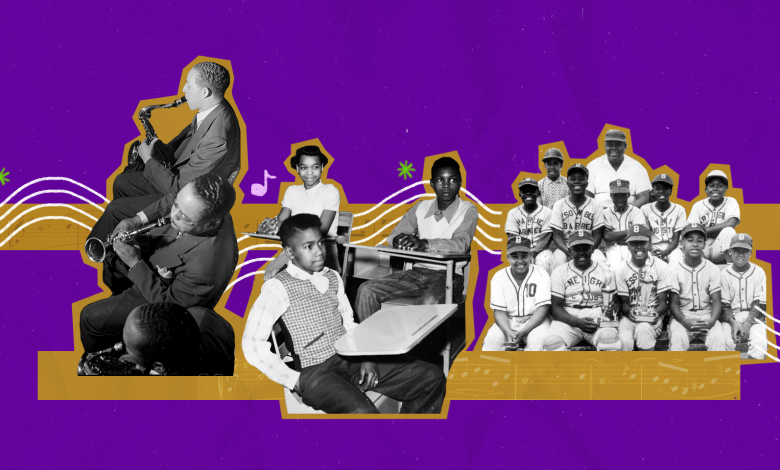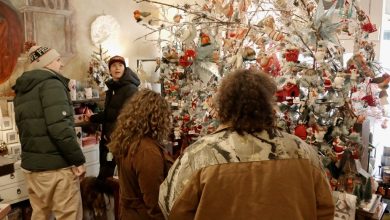Black Business Month: Historic districts to honor

National Black Business Month, observed in August, was established in 2004 to recognize the lasting impact of Black-owned businesses throughout history and today.
The first wave of Black-owned businesses began shortly after the Civil War, when freed Black people turned to entrepreneurship out of necessity. In the following decades, the original historic Black business districts popped up across the country, creating a pathway to economic liberation for their communities.
But then came the backlash. Systemic racism, redlining and white supremacy destroyed numerous thriving Black communities and business districts. Here are four of the historic Black business districts these forces decimated. However, their stories remind us of the resilience of Black entrepreneurs and the ongoing fight against economic and racial injustice. This National Black Business Month, let’s support and celebrate the continued rise of Black businesses to honor the legacies of these historic districts:
Black Wall Street — Tulsa, Oklahoma
In the early 1900s, Tulsa’s Greenwood district emerged as one of the most affluent and self-sufficient Black communities in the United States.
Commonly referred to as Black Wall Street, it was made up of more than 600 Black-owned enterprises, ranging from offices of medical professionals and lawyers to theaters, hotels and newspapers.
In 1921, a racist white mob attacked the district, burning down 35 city blocks and killing hundreds of Black residents. Known today as the 1921 Tulsa Race Massacre, it marked the beginning of hate-fueled systemic racism that ensured the community never fully recovered.
To this day, survivors have not received direct financial compensation from the city, state or federal government for their losses.
The area is currently home to the Greenwood Cultural Center, which promotes art, history, culture and positive race relations.
Rosewood, Florida
In the late 1800s, Rosewood was an independent Black town featuring Black-owned residences, enterprises and educational institutions. Families owned land, farmed and worked in the timber industry. The community consisted of three churches, a school, a large Masonic Hall, two mills, a baseball team (the Rosewood Stars) and two general stores.
On Jan. 1, 1923, the town’s prosperity was violently interrupted when a baseless, racially motivated allegation that a white woman had been assaulted by a Black man sparked a brutal massacre. White mobs set fire to homes and businesses, resulting in the deaths of some residents and the forced displacement of others. The town was never restored.
The Rosewood massacre stands as a reminder of the repercussions of white supremacy. A historical marker memorializes those who died.
Sweet Auburn — Atlanta
The historic Sweet Auburn district of Atlanta served as a lively center for Black-owned banks, newspapers, businesses and cultural sites. The district, home to Ebenezer Baptist Church and the family home of the Rev. Martin Luther King Jr., flourished during segregation in the Jim Crow South. It stood as a cultural and economic stronghold for Atlanta’s Black community.
Despite its cultural value, major portions of Sweet Auburn were torn down due to discriminatory policies and urban development. The construction of Interstates 75 and 85 sliced through Auburn Avenue, once known as “the richest Negro street in the world,” decreasing foot traffic and economic vitality.
Additionally, redlining — the practice of denying financial services, such as loans, to neighborhoods that are predominately communities of color — played a significant role in the loss of residences and the area’s deterioration. There are, however, efforts to revitalize Sweet Auburn.
Central Avenue — Los Angeles
Central Avenue once served as the heart of Black culture in Los Angeles, featuring thriving jazz clubs, theaters and businesses. Duke Ellington, Billie Holiday and Charlie Parker frequented the avenue, making the neighborhood the cultural and political center for the city’s Black community.
After the end of World War II, the systemic and racist practice of redlining restricted Black residents from getting home loans. At the same time, urban renewal and freeway construction further disrupted the community. The Black-owned businesses along Central Avenue closed and cultural landmarks vanished, leaving a significant hole in the legacy of Black Los Angeles. There is an effort proposed by community leaders to improve the historic business district.
Lauren Michelle Maroney is a social media manager for the SPLC.
Image at top: Photo collage by the SPLC. Image details (left to right): Untitled 1942 photo, possibly of Red Saunders’ band, by Jack Delano via the Library of Congress; Students attend Livingston Street School in Asheville, North Carolina, circa 1960, courtesy of the University of North Carolina Asheville; The Blue Birds African American baseball team circa 1961, courtesy of Rob Neufeld.




